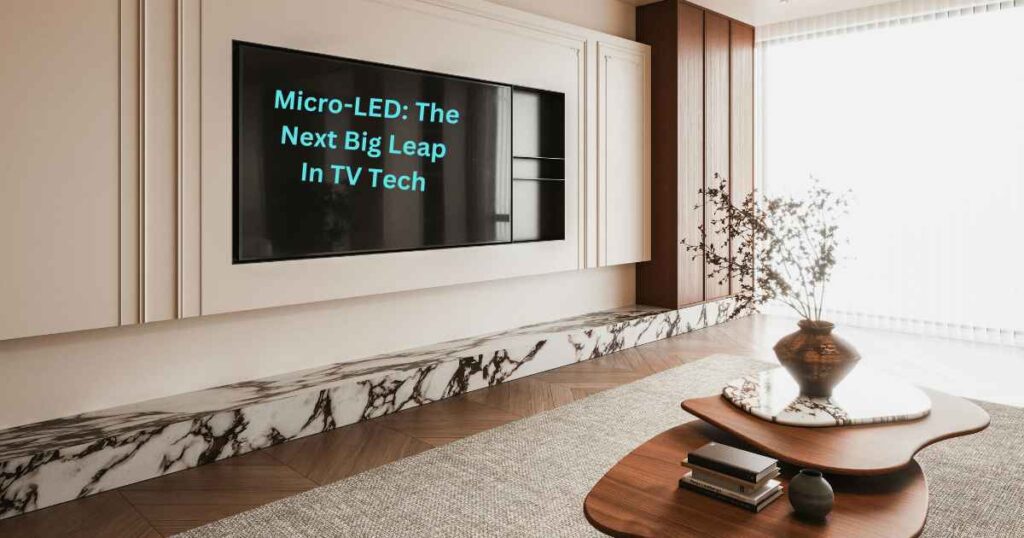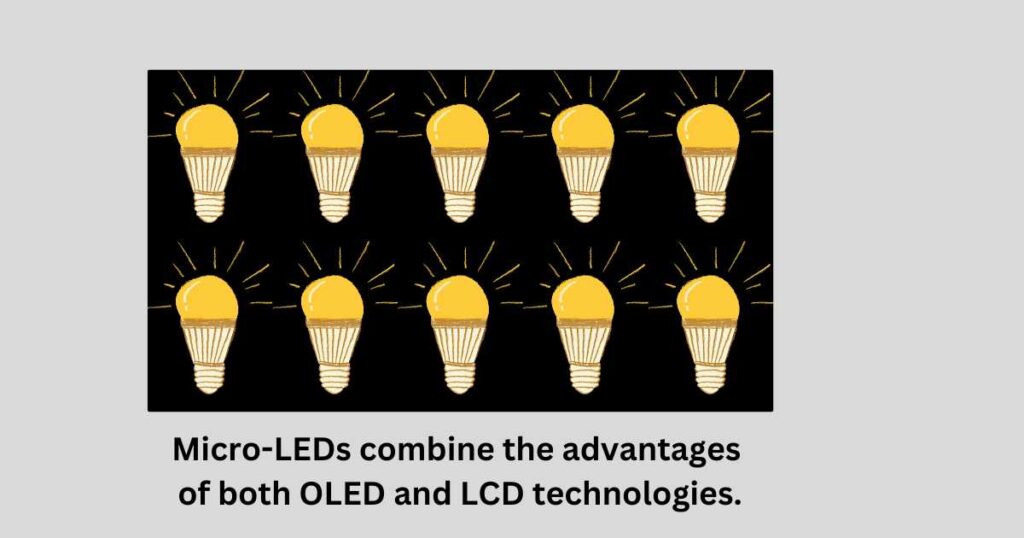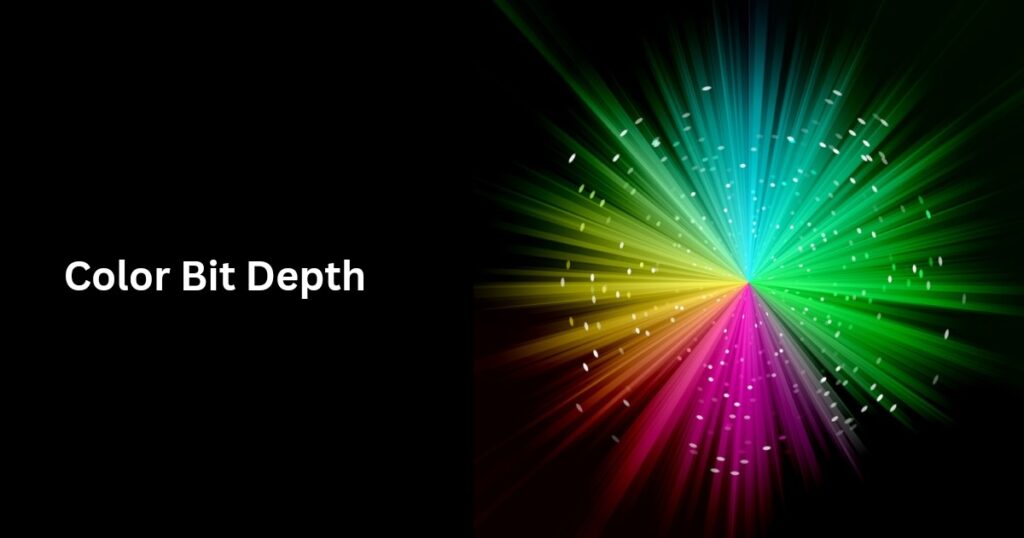Will Micro-LED, The Next Big Leap In TV Tech Replace Others?

The next big leap in television technology: micro-LED.
What’s the first thing that comes to mind when you hear this term?
Small, miniature LEDs, right?
While that’s true, there’s a lot more behind this fascinating technology.
Just hold with us to hear the full story.
What inspired the development of micro-LED technology?
Before we dive into what micro-LED actually is, let’s first understand the motivation behind developing this technology in the first place.
Blooming in LCDs
In a conventional LED LCD TV, there’s a backlight that provides illumination for all the pixels.
This backlight can have anywhere from a few dozen to thousands of tiny inorganic LEDs.
That said, a TV screen typically has millions of pixels.
So, instead of each pixel having its own light source, a single LED or a small cluster of them (called a dimming zone) lights up hundreds or even thousands of pixels at once.
Thus, the higher number of dimming zones or LEDs a TV’s backlight has, the better control it has over brightness and darkness in different parts of the screen.
That usually means better contrast and deeper blacks, though contrast also depends on the type of panel used, like VA or IPS.
However, even with thousands of LEDs packed into the backlight, an LCD TV cannot achieve full control over individual pixels.
Moreover, the backlight always remains on, and the LEDs illuminate together, while the liquid crystals act like tiny shutters that regulate how much light passes through.
As a result, when the screen needs to display complete darkness, the LEDs can only be dimmed, assuming the TV has local dimming feature.
However, the LEDs cannot be turned off completely.
This all leads to light leakage into dark areas, causing blacks to appear more greyish than truly black.
Consequently, the contrast ratio suffers, and the overall picture quality appears less realistic compared to displays capable of true pixel-level light control.
Burn-in problem in OLEDs
OLED technology offers a permanent solution to the problem of imperfect contrast found in LCDs.
Since OLED pixels are self-emissive, each pixel can turn off completely when absolute darkness is required.
This enables OLED displays to achieve near-infinite contrast ratios and produce pure blacks, resulting in highly realistic picture quality compared to LCD TVs.
However, a drawback of OLEDs is that they rely on organic materials, which can degrade over time under prolonged use.
This degradation may cause issues such as image retention, burn-in, or a reduced lifespan.
Micro-LED TVs have been developed to address both the blooming issues present in LCD TVs, as well as the limited lifespan concerns of OLED displays.
By using inorganic, self-emissive LEDs at the pixel level, micro-LEDs combine the deep blacks and high contrast of OLEDs with the high peak brightness and longevity of traditional LED technology.

But that’s not the end.
Micro-LEDs come with plenty more perks too.
So, let’s jump right in and explore the world of micro-LEDs.
What is micro-LED?
Micro-LED is a display technology that integrates countless micrometer-sized LEDs directly into its panel.
These are red, green, and blue inorganic LEDs, each smaller than a grain of sand.
A single set of such RGB LEDs is used for each pixel.
Because every pixel becomes self-emissive, micro-LED TVs can achieve true blacks and exceptional contrast, similar to OLED displays.
The key advantage, however, lies in the use of inorganic LEDs.
Unlike OLEDs, micro-LEDs are not susceptible to degradation or burn-in over time.
As a result, they combine the superior brightness and durability of LCDs with the perfect black levels and contrast of OLEDs, offering the best of both technologies.
Micro-LEDs come with staggering price tags.
Just think that a 4K micro-LED display contains around 8.3 million pixels.
Since each pixel requires a trio of red, green, and blue LEDs, that amounts to roughly 25 million individual LEDs.
Manufacturing such an enormous number of LEDs within a single display is an extremely expensive process, which explains why micro-LED screens often carry staggering price tags, typically from hundreds of thousands up to over a million dollars.
Micro-LED TVs come in very large sizes.
In the previous section, we estimated the number of LEDs required to construct a 4K micro-LED display.
Since all these LEDs need to be integrated into one display, the resulting screen is inevitably quite large.
In practice, many micro-LED displays aren’t built as a single piece but are instead composed of multiple modules, each containing thousands of LEDs.
These modules are then assembled on-site to form the massive final display, with the number of modules determined by the desired resolution or pixel count.
Generally, micro-LED displays start at around 76 inches in size and can exceed 150 inches.
Micro-LED displays are limited to HD and 4K, with no 8K models so far.
A 4K micro-LED display, as mentioned earlier, contains around 25 million microscopic LEDs.
In contrast, an HD display would need only about one-fourth that number.
If both displays are of the same physical size, the HD version would have larger pixels, allowing the LEDs to be placed farther apart, making the manufacturing process comparatively easier.
However, an 8K display of the same size poses a far greater challenge.
It contains about 33 million pixels, each requiring an RGB trio of LEDs, amounting to roughly 99 million individual LEDs.
To fit this enormous number, nearly one-tenth of a billion LEDs, into the same display size, the LEDs would need to be shrinked in significantly smaller space than that in a 4K display, making fabrication far more complex and expensive.
Alternatively, keeping the LED size and packing density constant would mean the display would have to be about four times larger than a 4K screen, resulting in a massive 400–500 inch display.
Both scenarios are currently impractical, either due to prohibitive cost or enormous size.
As a result, today’s micro-LED displays are available only in HD and 4K resolutions, while 8K versions remain beyond current commercial feasibility.
Micro-LEDs offer the widest color gamut and viewing angles achieved so far.
OLEDs provide significantly wider viewing angles than LCD TVs.
However, micro-LEDs, which have direct RGB emitters outperform them all, maintaining accurate colors without distortion even at the most extreme angles.
Talking about color gamut, while most modern TVs can only reproduce around 60% of Rec. 2020, the widest color gamut defined so far, micro-LED displays have the potential to reach, or even exceed, 100% of it.
If micro-LED technology becomes mainstream in the future, it may drive the need for an even wider color gamut than Rec. 2020, which itself encompasses 75.8% of the CIE 1931 color space.
Imagine a future where micro-LEDs cover the entire CIE 1931 color space—representing every hue visible to the human eye.
At that point, the difference between an image on screen and reality could virtually disappear!
Micro-LEDs deliver exceptionally high peak brightness and color volume.
Thanks to the presence of an enormous number of LEDs in the panel, micro-LED displays can achieve brightness levels ranging from 10,000 nits to over a million nits, far beyond the peak brightness of even the best OLEDs and LCDs, which top out around 4,000 nits.
Combined with their ultra-wide color gamut, this exceptional brightness allows micro-LED TVs to deliver an immense color volume, producing colors far richer and more vivid than those of conventional displays.
As a result, every detail comes alive, bringing images strikingly close to reality.
With virtually infinite contrast and such a huge color volume, micro-LED displays offer arguably the pinnacle of HDR performance, faithfully realizing the creator’s vision in every frame.
Micro-LEDs deliver lightning-fast performance.
In an LCD TV, the backlight must pass through multiple LCD layers before reaching the screen, which introduces a delay and results in response times of around 4–5 milliseconds.
In contrast, OLED pixels are self-emissive, they generate light directly.
Organic LEDs are embedded within the display itself, so light only needs to pass through a thin layer of color filters (in case of WOLEDs) or strike a layer of quantum dots (in QD-OLEDs) to produce the primary RGB colors.
Because these layers too are integrated directly into the display panel itself, light travels almost immediately to the screen, allowing OLEDs to achieve extremely fast response times of around 0.1 milliseconds, which is much quicker than LCDs.
That being said, micro-LED displays take speed to an entirely different level.
As each pixel contains its own RGB inorganic LEDs, the primary colors shoot straight to the screen without any delay.
With an amazing response time of just 0.2 nanoseconds, which is almost thousands of times faster than OLEDs, micro-LED TVs make motion blur and ghosting virtually nonexistent.
No matter the refresh rate, every fast-paced scene looks incredibly sharp and smooth, creating a gaming experience that feels much more enjoyable than ever.
Compared to LCDs
Comparing a regular LCD TV to a micro-LED doesn’t really make much sense.
Micro-LED far outperform traditional LEDs in every aspect, be it contrast, color volume, HDR, gaming performance, you name it!
But when it comes to price, that’s where opinions may become contradictory.
A high-end LED TV will cost just a tiny fraction of what you’d pay for a micro-LED.
In practicality, a good mini-LED VA LCD TV with around 10,000 dimming zones can still give you an amazing viewing experience with deep blacks, bright highlights up to 4,000 nits, and rich colors.
Sure, you might notice a bit of blooming or motion blur here and there, but it’s nothing major, especially considering the massive price gap between it and a micro-LED.
Plus, LCDs last just as long as micro-LEDs since both use inorganic materials.
And let’s not forget, LCDs come in many size options, unlike those gigantic micro-LED displays.
Compared to OLEDs
An OLED TV can only go head-to-head with a micro-LED when it comes to contrast and those deep, inky blacks, as both of them use self-emissive pixels.
But in pretty much everything else, be it brightness, color gamut, HDR punch, and lifespan, micro-LEDs turn out to be far superior than OLEDs.
That said, the top OLEDs like QD-OLEDs and MLA-based WOLEDs still look absolutely stunning.
QD-OLEDs are perfect for dark rooms, while MLA OLEDs really shine in bright ones.
They get plenty bright too and, best of all, cost way less than those insanely expensive micro-LEDs.
Could micro-LED be the future of television technology?
With so many advantages over OLED and LCD displays, you might wonder if micro-LEDs will eventually replace all other display types.
Well, that could possibly happen if they become more affordable and start coming in smaller sizes.
That said, there’s another futuristic tech on the horizon that could actually rival micro-LEDs.
It is QDEL (Quantum Dot Electroluminescent).
In this technology, quantum dots light up on their own when an electric current passes through them.
Since these quantum dots can directly emit light, they themselves act as self-emissive pixels, without the need for an organic layer like in OLEDs.
This means better lifespan and none of the burn-in worries.
Just like RGB micro-LEDs, QDELs being direct emitters too can deliver perfect blacks, crazy-high brightness, and super-fast response times.
In short, QDEL could pack nearly all the benefits of micro-LED displays and might become their strongest competitor in the future.


